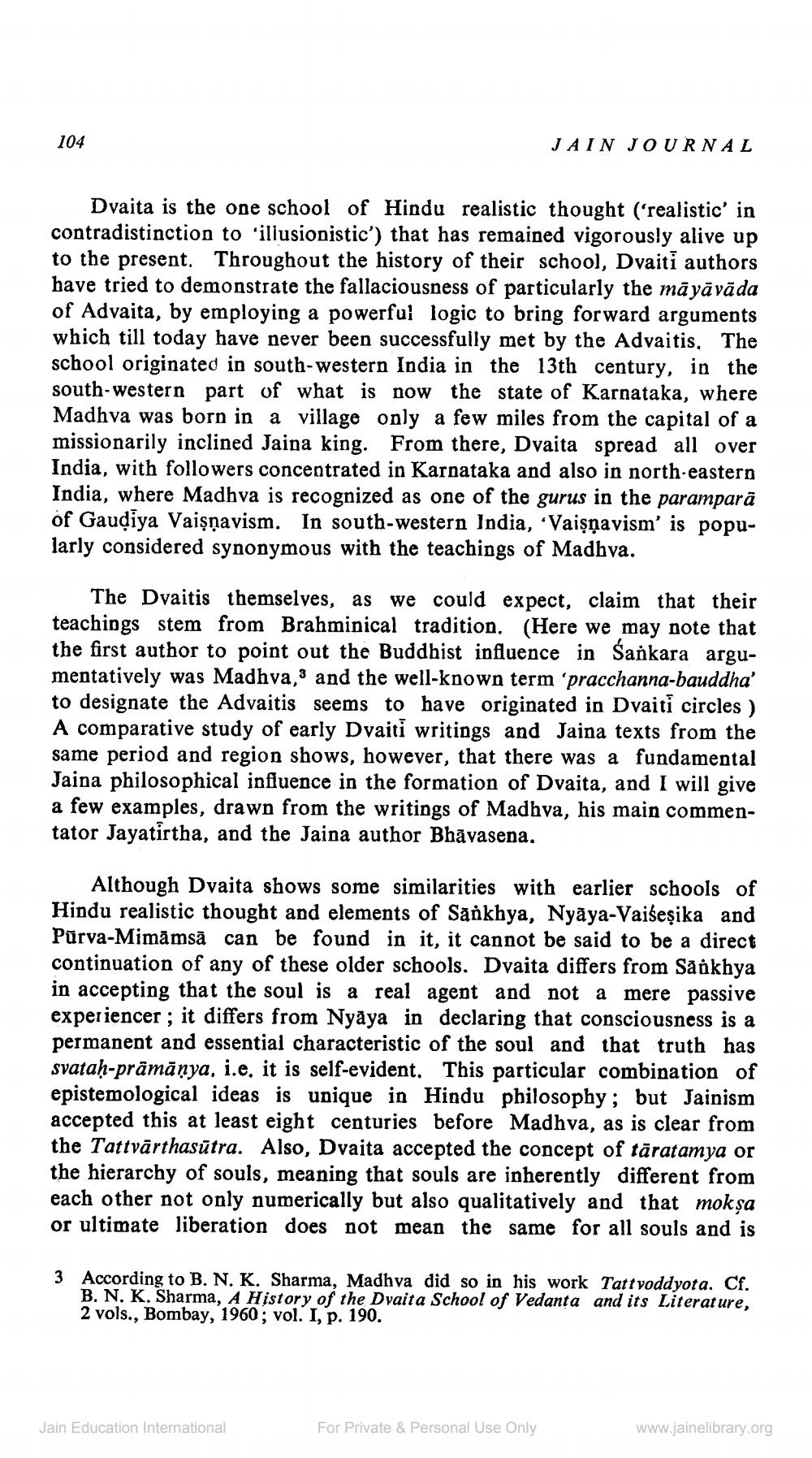________________
104
JAIN JOURNAL
Dvaita is the one school of Hindu realistic thought ('realistic' in contradistinction to 'illusionistic') that has remained vigorously alive up to the present. Throughout the history of their school, Dvaiti authors have tried to demonstrate the fallaciousness of particularly the māyāvāda of Advaita, by employing a powerful logic to bring forward arguments which till today have never been successfully met by the Advaitis, The school originated in south-western India in the 13th century, in the south-western part of what is now the state of Karnataka, where Madhva was born in a village only a few miles from the capital of a missionarily inclined Jaina king. From there, Dvaita spread all over India, with followers concentrated in Karnataka and also in north-eastern India, where Madhva is recognized as one of the gurus in the paramparā of Gaudiya Vaişņavism. In south-western India, “Vaişņavism' is popularly considered synonymous with the teachings of Madhya.
The Dvaitis themselves, as we could expect, claim that their teachings stem from Brahminical tradition. (Here we may note that the first author to point out the Buddhist influence in Sankara argumentatively was Madhva,; and the well-known term 'pracchanna-bauddha' to designate the Advaitis seems to have originated in Dvaiti circles ) A comparative study of early Dvaiti writings and Jaina texts from the same period and region shows, however, that there was a fundamental Jaina philosophical influence in the formation of Dvaita, and I will give a few examples, drawn from the writings of Madhva, his main commentator Jayatirtha, and the Jaina author Bhāvasena.
Although Dvaita shows some similarities with earlier schools of Hindu realistic thought and elements of Sankhya, Nyāya-Vaišeşika and Pūrva-Mimāmsā can be found in it, it cannot be said to be a direct continuation of any of these older schools. Dvaita differs from Sãokhya in accepting that the soul is a real agent and not a mere passive experiencer ; it differs from Nyāya in declaring that consciousness is a permanent and essential characteristic of the soul and that truth has svataḥ-prāmāṇya, i.e, it is self-evident. This particular combination of epistemological ideas is unique in Hindu philosophy; but Jainism accepted this at least eight centuries before Madhva, as is clear from the Tattvārthasūtra. Also, Dvaita accepted the concept of tāratamya or the hierarchy of souls, meaning that souls are inherently different from each other not only numerically but also qualitatively and that mokşa or ultimate liberation does not mean the same for all souls and is
3 According to B. N. K. Sharma, Madhva did so in his work Tattyoddyota. Cf.
B. N. K. Sharma, A History of the Dvaita School of Vedanta and its Literature, 2 vols., Bombay, 1960; vol. I, p. 190.
Jain Education International
For Private & Personal Use Only
www.jainelibrary.org




